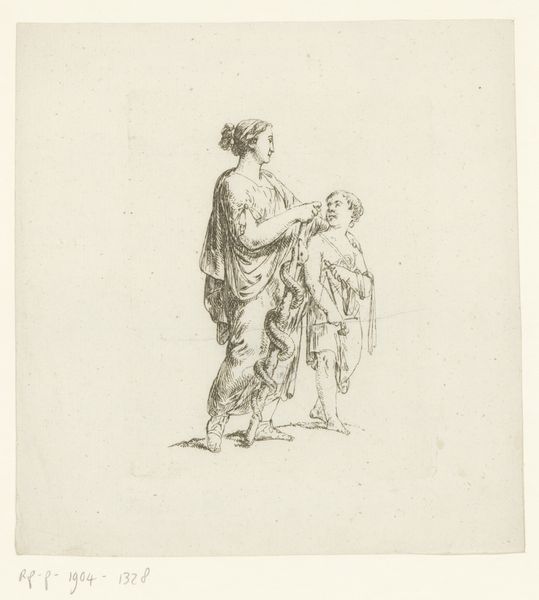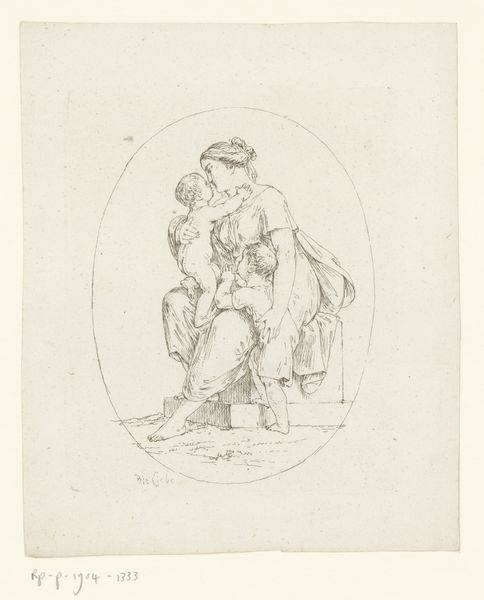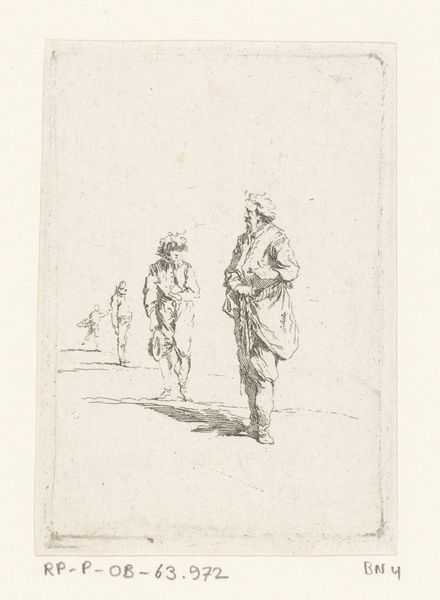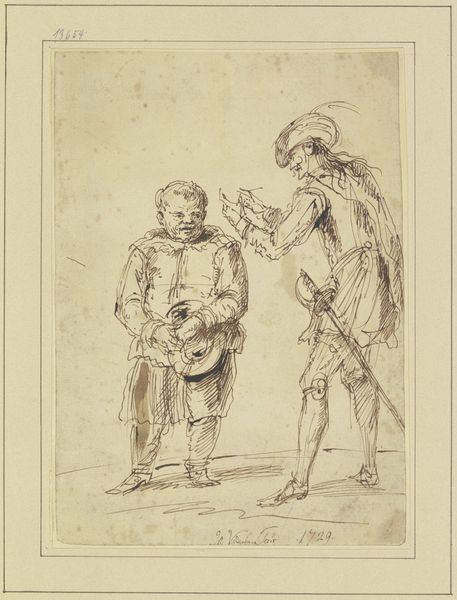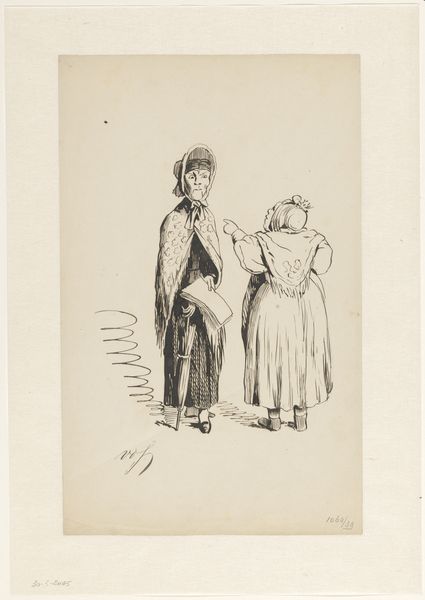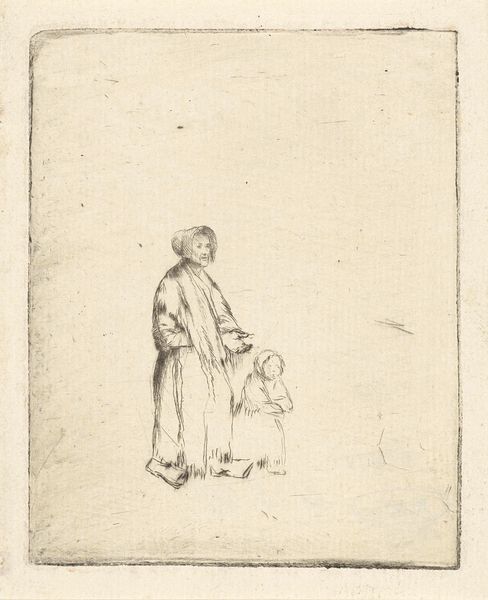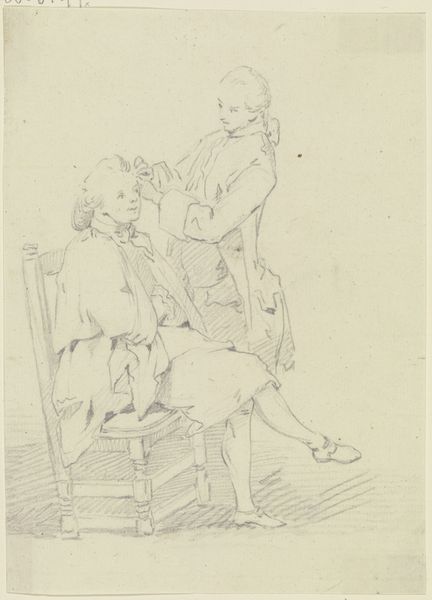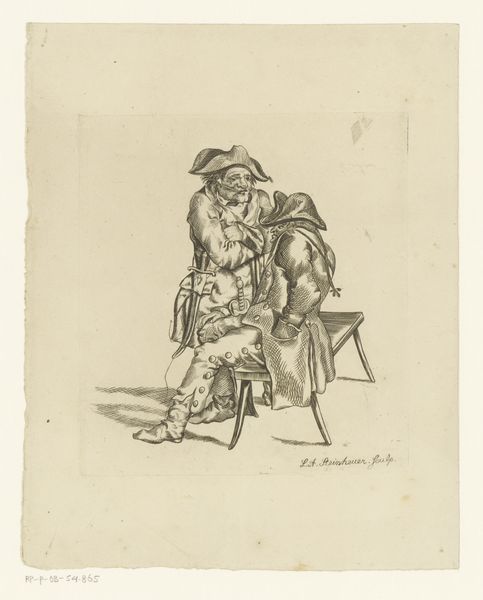
drawing, pen
#
drawing
#
neoclacissism
#
light pencil work
#
quirky sketch
#
allegory
#
pencil sketch
#
landscape
#
figuration
#
personal sketchbook
#
idea generation sketch
#
ink drawing experimentation
#
pen-ink sketch
#
sketchbook drawing
#
pen
#
pencil work
#
sketchbook art
Dimensions: height 140 mm, width 114 mm
Copyright: Rijks Museum: Open Domain
Christian Bernhard Rode created this small drawing, "Allegory of Agriculture," in eighteenth-century Germany, using pen and ink. We see a female figure, likely a classical deity of agriculture, standing beside a young boy who is holding a rudimentary plow. This image is more than just a simple depiction of farming. It reflects the values and ideals of the Enlightenment era. The artist has chosen allegorical figures to represent abstract concepts like agriculture. The woman is rendered in a classical style, which was fashionable at the time and also signalled her elevated status. Rode's work speaks to the rising importance of agriculture in the 1700s, especially in a country like Germany. As historians, we can look to agricultural treatises, economic data, and even philosophical texts to understand the full significance of this piece. By examining these sources, we are able to uncover the complex network of ideas and institutions that gave shape to the art of the time.
Comments
No comments
Be the first to comment and join the conversation on the ultimate creative platform.
